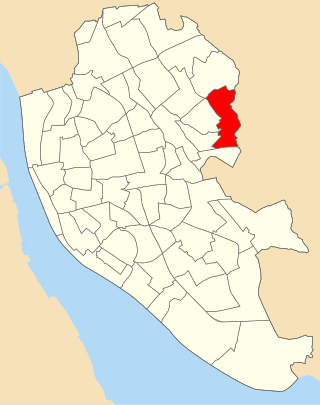
The English longbow was a powerful medieval type of bow, about 6 ft (1.8 m) long. While it is debated whether it originated in England or in Wales from the Welsh bow, by the 14th century the longbow was being used by both the English and the Welsh as a weapon of war and for hunting. English longbows were effective against the French during the Hundred Years' War, particularly in the battles of Sluys (1340), Crécy (1346), Poitiers (1356), and Agincourt (1415). They were less successful later on, as longbowmen had their lines broken at the Battle of Verneuil (1424), although the English won a decisive victory there; they were completely routed at the Battle of Patay (1429) when they were charged by the French mounted men-at-arms before they had prepared the terrain and finished defensive arrangements. The Battle of Pontvallain (1370) had also previously shown longbowmen were not particularly effective when not given the time to set up defensive positions.

Lee Kuan Yew, often referred to by his initials LKY, was a Singaporean statesman and lawyer who served as the first Prime Minister of Singapore from 1959 to 1990, as well as Secretary-General of the People's Action Party from 1954 to 1992. He was the Member of Parliament (MP) for Tanjong Pagar from 1955 until his death in 2015. Lee is widely recognised as the founding father of the modern Singaporean state, and for his leadership in turning it into a highly developed country under his tenure.

Taxus is a genus of coniferous trees or shrubs known as yews in the family Taxaceae. Yews occur around the globe in temperate zones of the northern hemisphere, northernmost in Norway and southernmost in the South Celebes. Some populations exist in tropical highlands.

Topiary is the horticultural practice of training perennial plants by clipping the foliage and twigs of trees, shrubs and subshrubs to develop and maintain clearly defined shapes, whether geometric or fanciful. The term also refers to plants which have been shaped in this way. As an art form it is a type of living sculpture. The word derives from the Latin word for an ornamental landscape gardener, topiarius, a creator of topia or "places", a Greek word that Romans also applied to fictive indoor landscapes executed in fresco.

The prime minister of Singapore is the head of government of the Republic of Singapore. The president appoints the prime minister, a Member of Parliament (MP) who in their opinion, is most likely to command the confidence of the majority of MPs. The incumbent prime minister is Lee Hsien Loong, who took office on 12 August 2004.

Painswick is a town and civil parish in the Stroud District in Gloucestershire, England. Originally the town grew from the wool trade, but it is now best known for its parish church's yew trees and the local Rococo Garden. The village is mainly constructed of locally quarried Cotswold stone. Many of the buildings feature south-facing attic rooms once used as weavers' workshops.

Taxus baccata is a species of evergreen tree in the family Taxaceae, native to Western Europe, Central Europe and Southern Europe, as well as Great Britain and Ireland, Northwest Africa, northern Iran, and Southwest Asia. It is the tree originally known as yew, though with other related trees becoming known, it may be referred to as the common yew, English yew, or European yew. It is primarily grown as an ornamental. Most parts of the plant are poisonous, with toxins that can be absorbed through inhalation, ingestion and through the skin; consumption of even a small amount of the foliage can result in death.

Ashbrittle is a village and civil parish in Somerset, England, situated nine miles west of Taunton and close to the River Tone and the route of the Grand Western Canal. The village has a population of 225.

Clipsham is a small village in the county of Rutland in the East Midlands of England. It is in the northeast of Rutland, close to the county boundary with Lincolnshire. The population of the civil parish was 120 at the 2001 census increasing to 166 at the 2011 census.

Lorton, a parish in Cumberland, Cumbria, England, consists of two adjacent villages: Low Lorton and High Lorton. Both nestle at the northern end of the Vale of Lorton, surrounded by fells such as Grasmoor, Hopegill Head and Whiteside. They are about 4 miles (6.5 km) from Cockermouth, which gives access to the main A66 road. Other nearby places include Loweswater and Brigham.
A longbow is a type of tall bow that makes a fairly long draw possible. A longbow is not significantly recurved. Its limbs are relatively narrow and are circular or D-shaped in cross section. Flatbows can be just as long, but in cross-section, a flatbow has limbs that are approximately rectangular.

The Fortingall Yew is an ancient European yew in the churchyard of the village of Fortingall in Perthshire, Scotland. Considered one of the oldest trees in Britain, modern estimates place its age at an average of 5,000 years.

Kingley Vale is a 204.4-hectare (505-acre) biological Site of Special Scientific Interest north of Chichester in West Sussex. It is also a Special Area of Conservation and a Nature Conservation Review site, Grade I. An area of 147.9 hectares is a national nature reserve.

Methuselah is a 4,855-year-old Great Basin bristlecone pine tree growing high in the White Mountains of Inyo County in eastern California. It is recognized as the non-clonal tree with the greatest confirmed age in the world. The tree's name refers to the biblical patriarch Methuselah, who is said to have reached 969 years of age before his death, thus becoming synonymous with longevity or old age in many European languages including English.

Yew Tree ward is an electoral division of Liverpool City Council within the Liverpool West Derby Parliamentary constituency.

Scotland is ideal for tree growth, thanks to its mild winters, plentiful rainfall, fertile soil and hill-sheltered topography. As of 2019 about 18.5% of the country was wooded. Although this figure is well below the European Union (EU) average of 43%, it represents a significant increase compared to the figure of 100 years previously: in 1919 it was estimated that only 5% of the country's total land area was covered in forest. The Scottish Government's Draft Climate Change Plan has set an aim of increasing coverage to 21% of Scotland by 2032, with the rate of afforestation rising to 15,000 hectares per year by 2024.

Tahkuna Nature Reserve is a nature reserve situated on Hiiumaa in western Estonia, in Hiiu County.















